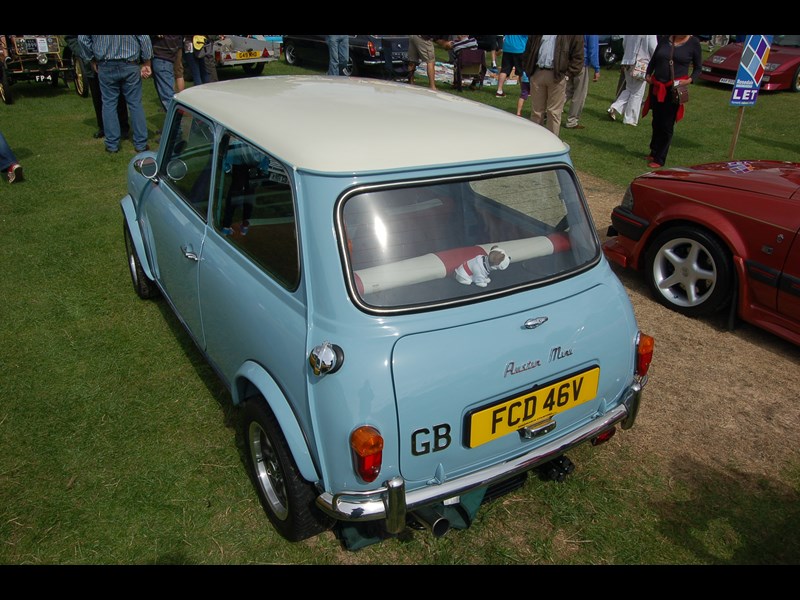Great to drive, the ZA/ZB Magnette has lots going for it.
The original ZA Magnette was unveiled in 1953, with the updated ZB following in the summer of 1956. Designed by Gerald Palmer, the Magnette range was elegant and affordable, yet had independent front suspension, rack-and-pinion steering and a BMC B-series engine. Sales were strong, helping to establish MG as a key part of BMC’s badge-engineering portfolio. Time was called on the Magnette in January 1959 after 37,000 cars had been built, to be replaced by the ’Farina’ Magnette.
VITAL STATISTICS
1953 MG Magnette ZA
Engine 1489cc/4-cyl/OHV
Power (bhp@rpm) 60bhp@4600rpm
Torque (lb ft@rpm) 76lb ft@3000rpm
Top speed 80mph
0-60mph 22sec
Consumption 28 mpg
Gearbox 4-speed manual
WHAT TO LOOK FOR
BODYWORK & CHASSIS
Magnettes weren’t very well rustproofed when new, so you need to check the monocoque carefully, particularly along the underside of the sills. There’s a seam where the inner and outer sills meet, and the whole length of the sill – from the front wheelarch to the rear – needs to be examined thoroughly. If the seam is corroded, then there’s a good chance that major rust will be lurking elsewhere. Another common rot spot is the box section that sits just behind the front wheels. This can fill with water and rust will quickly spread to the sills if the drain channels are blocked. Also inspect the toe boards and all box section members. Rear wings corrode at the back of the rear wheelarch, as do the rear spring hangers, while the boot floor and trailing edges of the bootlid often suffer too.
Window ledges rust, causing water to be trapped in the doors, which leads to further corrosion from within. Front wings bolt on and can be a nightmare, as they rust along the top edges by the front bumper and around the headlamps. External trim can be difficult to obtain, particularly the ‘hockey stick’ chrome mouldings and bumpers, so make sure its all present and correct.
ENGINE
The B-Series is tough and tolerant of neglect. Look for low oil pressure – anything less than 50psi on the move is bad news – smoking, undue tappet noise and rumbling crankshafts under load. A higher pitched noise indicates the big end shells needing replacing. On the plus side, the unit is simple and relatively inexpensive to overhaul if attention is required. The original B-Series was a twin-carb 1489cc unit, but bear in mind that later ZAs and ZBs used a better cylinder head with double valve springs. Is the correct engine still fitted? Often MGA or MGB versions were substituted. Gearboxes are sturdy, though they can become noisy and lose synchromesh, usually in second gear, but will usually soldier on regardless. The same goes for the rear axle. Check to see if the right ratio is still fitted to the car – 4.3:1, 4.875:1 and 4.55:1 versions were used during production. The combined clutch and brake master cylinder corrodes internally and is expensive to refurbish.
RUNNING GEAR
Magnettes have 17 grease points, all of which need attention every 1000 miles. Expect a lot of wear and tear if this task has been neglected. Most components are hard wearing, but rusty front wishbones and broken rear springs are not uncommon. The standard drum brakes hold no particular horrors, but again, watch out for lack of maintenance. The standard set up is adequate, though many owners fit MkIII or IV drums or MGA discs for added stopping power. The rack-and-pinion steering gives few problems, but it’s worth looking for split gaiters, as these will let dirt in and destroy the rack. If there’s play in the steering between the inner and outer column tubes, check the felt bushes at each end of the column – they dry out, allowing for unwanted movement. The top one gives most problems, but happily this is the easiest one to check, simply by waggling the wheel. Another common problem area is each of the tie rods that locate the suspension longitudinally – there are two on each side, one in front and one behind the suspension assembly. Both corrode, leading to the bars snapping in a worst case scenario, so check them thoroughly for abrasion or damage.
INTERIOR
Magnette interiors are well-appointed affairs, in wood and fine leather, but are often damaged by ageing and water leaks. Perished screen rubbers are usually to blame. Replacement trim is expensive and tricky to source, so make sure it’s all there, while early cars’ wood effect steel dash units will be hard to replace too.
OUR VERDICT
Excellent ride comfort, impressive road holding and surprisingly lively performance make the Magnette a great choice. Well respected to this day, the ZA and ZB enjoy fantastic club support, and an extensive selection of spares are available.






















































































































